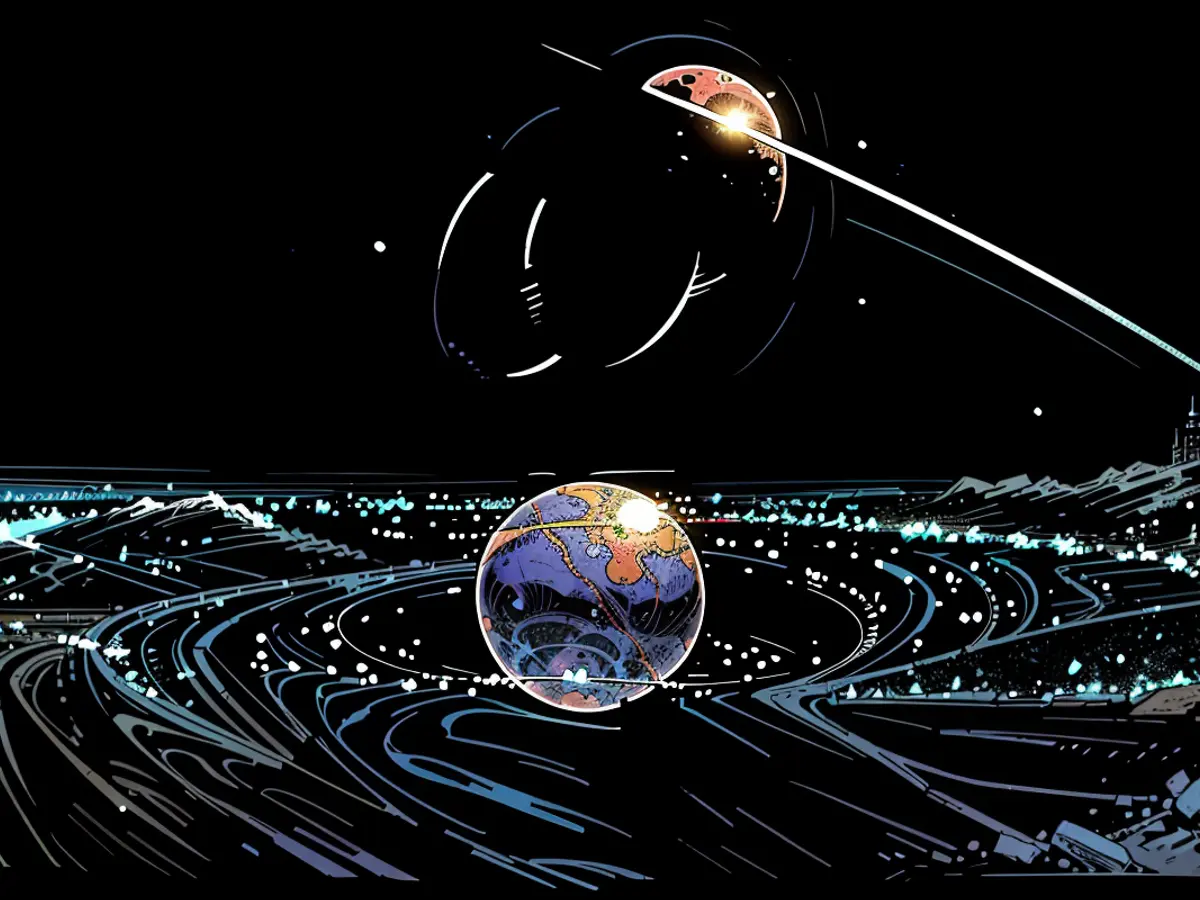Asteroids are closely monitored
Asteroid impacts on Earth can have devastating consequences. Some celestial bodies in space are therefore under close observation. One of them is coming particularly close to Earth in a few years.
The approximately 350-meter-large asteroid Apophis will fly by Earth in April 2029, coming closer than some of its satellites. The distance of the asteroid from then, only about 32,000 kilometers from the Earth's surface, is almost nothing in the vastness of our solar system, but in this case, it is just enough to prevent a catastrophic collision.
"That would be quite unpleasant if it entered the atmosphere," says asteroid expert Detlef Koschny, who holds the chair for Lunar and Planetary Exploration at the Technical University of Munich. If such an asteroid hits Earth, an entire country would feel the effects. With the size of Apophis, not only a shockwave but also extreme hot air should be expected, which could cause things to ignite.
Asteroid defense is not just theory
Experts are monitoring thousands more asteroids besides Apophis that could come closer to Earth. On June 30, the International Day of Asteroids, attention is drawn to the threats and opportunities of these celestial bodies.
Meanwhile, humanity is no longer completely defenseless against them. "With an object of this size, we would really see if we could somehow deflect it," says Koschny about Apophis. To clarify the dimensions, the expert reminds us of a crater with a diameter of 1.5 kilometers in the US state of Arizona - this was caused by the impact of a only 50-meter-large object.
Mankind is no longer in the realm of science fiction when it comes to detecting and potentially dangerous asteroids and deflecting them from their course. As part of a mission by the US space agency NASA and the European Space Agency ESA, the NASA probe "Dart" was deliberately collided with a smaller part of a binary asteroid in September 2022. The impact changed the orbit of the smaller part named Didymos around the larger part, which is named Dimorphos. The ESA probe "Hera" is scheduled to launch this year to obtain more precise measurements about the binary asteroid and the impact.
Impact crater or deformation?
"We know quite precisely what happened during the 'Dart' impact," says Richard Moissl, the ESA coordinator for asteroid defense, who sits with his team in Frascati near Rome. The goal of the "Hera" mission is to investigate how the asteroid looks now and what structure and density it exhibits. "Through this, we receive much better insights into what exactly happened during the 'Dart' impact and on which body we collided." Therefore, "Hera" is the crucial second component of the mission.
Koschny sees it the same way. With "Dart," it has been shown that deflection works. "But if I really want to understand what happened, I need to know a few more things, for example: How heavy was the object we hit?" Perhaps there is an impact crater or perhaps the object deformed. That cannot be determined from Earth.
Asteroids are leftover fragments from the formation of our Solar System. The larger ones could potentially pose a threat to life on Earth as we know it. It was probably a roughly 10 to 15 kilometer asteroid that caused the extinction of the dinosaurs. Even with sizes of a few meters, the fragments from space can cause immense damage.
Most likely, it was an asteroid around 40 to 50 meters in size that fell over Siberia on June 30, 1908. The pressure wave of the explosion knocked down millions of trees in Tunguska, on an area almost as large as Saarland. Due to this event, the United Nations later declared the Asteroid Day. In February 2013, an approximately 20 meter asteroid exploded over the million-city Chelyabinsk. Around 1500 people were injured, mostly from shattering window glass due to the pressure wave.
"Approximately 1.3 million asteroids have good orbital information," says Moissl. "We discover new ones every year and continuously," he adds, mentioning unusual constellations like the asteroid Dinkinesh with a moon. Most of these asteroids are found in the main belt between Mars and Jupiter.
"For us, Earth-crossing asteroids are of particular interest," says Moissl about so-called NEOs (Near-Earth Objects). "With most of these, one speaks of a collision probability of one in a million or even less," he explains. "All known NEOs are periodically checked by us," he states. "The orbits of asteroids are not carved in stone." For the roughly 35,000 currently known Earth-approaching fragments, scenarios for the next hundred years are played out repeatedly.
Currently, there is no large asteroid that is seen on a collision course, says Moissl. And Koschny also sees no crash danger. There is also a risk list at the ESA. "There's nothing on it that I would worry about," he says.
Apophis, which passes the Earth almost as close as a hair's breadth, offers opportunities, according to Moissl. There are plans to send a probe there. "It flies so close to the Earth that we can learn a lot about the interaction with the Earth," says the ESA expert. "It's a wonderful, unique opportunity."
- NASA and ESA are collaborating on asteroid defense, as demonstrated by the NASA probe "Dart" that deliberately collided with a binary asteroid in September 2022.
- The European Space Agency (ESA) is planning to launch the probe "Hera" this year to obtain more precise measurements about the impact of the "Dart" mission on the binary asteroid.
- With ongoing monitoring and missions like these, space agencies are working towards better understanding and potentially deflecting potentially hazardous asteroids, such as the 350-meter-large Apophis, which will come close to Earth in 2029.







